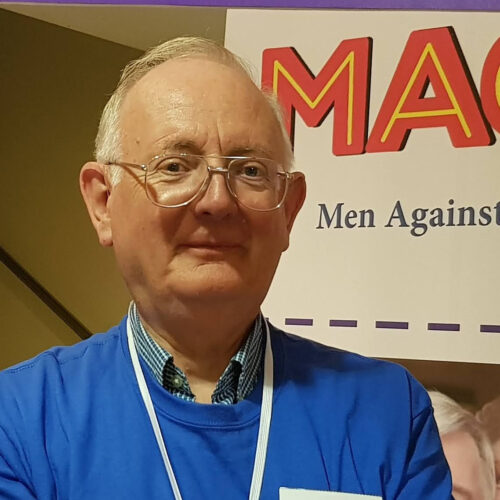Tom Hope explains why active surveillance proved the right choice for him
In 2009, age 62, I had my annual visit to the doctor to get my blood pressure checked. On this occasion, he took blood samples that I took to be part of a normal annual health check. About a week later my doctor contacted me and said that there some high readings from the blood test and he would like me to see a urologist to check them out.
At this stage I did not realise what the readings were, or what they might mean. I visited the urologist who then explained what the prostate gland was, what function it performed and what the PSA readings represented. Because of a jump in the PSA readings from 2.9 to 4.5, there was cause for concern so I should undergo a biopsy, which should clarify the cause of the rise in the PSA. After the TRUS biopsy, I was asked to come back to the urologist and bring my wife with me.
At the visit, the consultant informed me that I had cancer cells in one sample of twelve samples taken. It was low grade prostate cancer, classified as Gleeson 6 on the Gleeson Scale of 6-12.
This came as a total shock to me because I had no symptoms or any difficulty with urinary function. I was given the options of surgery to remove the prostate (which carried a risk of incontinence) or active surveillance, which involved getting a blood test every six months to monitor my PSA and visiting my urologist every six months to get a digital rectal examination (DRE) to monitor the status of the cancer. I talked over the options with my wife and decided to follow active surveillance as I did not wish to risk incontinence unless absolutely necessary. I could always opt for surgery at a later stage if I changed my mind. I explained my decision to my three adult children.
The most challenging issue for me was accepting that I had prostate cancer. I had not caused it: I did not drink or smoke and I exercised regularly. The cancer was unlikely to cause me any difficulty or kill me. About 80% of men who reach the age of 80 will have prostate cancer but it will not kill them.
I found great comfort and support in meeting and talking to other men who had been diagnosed and treated for prostate cancer, and were living normal lives 15 years or more after being diagnosed.
In May 2014 I joined Men Against Cancer (MAC), a support group for men who have been diagnosed with prostate cancer.
Further TRUS biopsies in 2013 and 2015 both showed no cancer. In 2019 I had an MRI scan which showed a tumour and another biopsy (this time transperineal) confirmed as Gleeson 6. In 2021 another transperineal biopsy showed three samples positive out of 42, still Gleeson 6.
Today, 13 years after my diagnosis, my PSA is in the range of 5 to 6.2. At the age of 74, I am in good health.
I have followed the debate in journals and webinars whether we should stop calling low grade prostate cancers such as mine, “cancer”. My own view is that this will not remover the shock and worry of going through the prostate cancer diagnostic process.
I believe the best way forward is to explain to men who are undergoing diagnosis that there is scientific evidence that 80% of men at 80 will have prostate cancer and it will not cause them a medical problem or kill them – it is part of the biology of ageing. Men identified with Gleeson 6 grade cancer should be told about the evidence that most will not develop aggressive cancer or need treatment over their lifetime, but that it will be necessary to monitor the prostate condition with active surveillance.
Research statistics have shown that 10 years after diagnosis, the prostate cancer will have progressed in 21% of men on active surveillance. That means that 79% of men on AS will have avoided the adverse side effects that prostate cancer treatments can cause. Where the cancer is identified as progressing, treatment options are available.
I believe it will be more successful to offer reassurance to the men and their families about the low risk of serious prostate cancer than to tell them it is not cancer .
